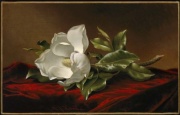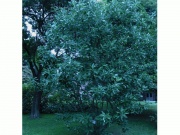Difference between revisions of "Magnolia"
Jump to navigation
Jump to search
| Line 15: | Line 15: | ||
<gallery> | <gallery> | ||
| − | File: | + | File:Uemura 09-10-2009 298.jpg|Silk dyed with Magnolia bark; Uemera Dye Archive |
File:37_Magnolia.jpg|Magnolia (''Magnolia grandiflora'') | File:37_Magnolia.jpg|Magnolia (''Magnolia grandiflora'') | ||
File:72_Magnolia_100X_Rad.jpg|Magnolia (''Magnolia grandiflora'') | File:72_Magnolia_100X_Rad.jpg|Magnolia (''Magnolia grandiflora'') | ||
File:72_Magnolia_100X_Tan.jpg|Magnolia (''Magnolia grandiflora'') | File:72_Magnolia_100X_Tan.jpg|Magnolia (''Magnolia grandiflora'') | ||
</gallery> | </gallery> | ||
| + | |||
== Resources and Citations == | == Resources and Citations == | ||
Revision as of 12:00, 30 June 2020
Description
A large family of ornamental, evergreen trees of the genus Magnolia, such as Magnolia grandiflora, that is native to Central and North America. Magnolia produces a heavy, durable wood that is used for boxes, furniture, and millwork.
Synonyms and Related Terms
laurel; sweet bay; southern magnolia (Magnolia grandiflora); bull bay; Magnolien (Deut.); Magnolie (Dan.); Magnolia (Esp., Fr., It., Ned., Sven.); Magnólia (Port.)
Physical and Chemical Properties
Medium tree growing to 25 m with pyrimidal crown. Wood desnity = 35 pcf. Bark=brown with flat plates or scales. Leaves=oval (8-12 cm) and pinnately veined, waxy top surface. Fruit=aggregate of follicles turning red when mature in fall.
Additional Images
Resources and Citations
- Hardwood Manufacturers Institute, Memphis, Tenn.: air-dry weight = 35 pcf
- Encyclopedia Britannica, http://www.britannica.com Comment: "magnolia." 19 Oct. 2004 .
- Edward Reich, Carlton J. Siegler, Consumer Goods: How to Know and Use Them, American Book Company, New York City, 1937
- Virginia Tech Dendrology website at www.fw.vt.edu/dendro/dendrology/main.htm (accessed Oct. 8, 2005)
- Wikipedia: http://en.wikipedia.org/wiki/Magnolia (accessed Dec. 15, 2004)





